Welcome to Pyramiden, Svalbard: population 7
High up in the north of Norway in the Svalbard archipelago is a town called Longyearbyen. It’s generally known as the northernmost town in the world: about a thousand people live and work here, despite its remote location above the Arctic Circle.
But there’s actually another place which deserves the ‘northernmost-everything’ accolade – except it’s virtually uninhabited.
This is Pyramiden, a Russian coal-mining settlement which was hastily abandoned by its residents in 1998. Ever since, the streets, buildings and once-loved possessions have been left to the Arctic elements.
And today, I’m paying Pyramiden a visit.
Arriving in Pyramiden, Svalbard
From the deck of our boat, my first glimpse of Pyramiden is like something out of a spy film. Two Russian men in long dark trench coats stand waiting silently on the dock, with rifles slung across their chests. Their stoicism is completely at odds with the pent-up energy of my fellow boat passengers, all itching to explore Pyramiden.
Our boat drops anchor and I watch as the hordes of tourists jump eagerly onto the rickety boardwalk before we’ve even properly docked; cameras out immediately, as soon as their feet touch the creaking wood. I choose to hang back, watching the way they behave while warming my hands, red-raw with the Arctic cold, on the back of my neck.
I’ve long harboured a desire to visit Pyramiden.
Like many would-be urban explorers, the idea of exploring an entire town abandoned to the elements – and one that’s isolated at the very top of the world, no less – gave me goosebumps of the best variety.
So when I realised that my Arctic expedition from Scotland to Svalbard would actually lead me straight to this surreal place, I could barely contain myself.
People seem fascinated by the fact that Pyramiden is a ghost town. I’m more amazed by the handful of men who choose to keep living there still. Amongst the ghosts.
Meeting Sasha, our Pyramiden tour guide
We stand on the pier as our boat group is split into two. I’m in the second half, watching as the first group sets off towards the Pyramiden settlement in a little minibus with a polar bear crest on its side.
Looking at the Russian cyrillic it’s my first realisation that, although we’re still on Norwegian landmass and I’ve never visited Russia before, we’re very much back in the USSR.
A guide walks over to us and introduces himself as Sasha. He may look slight, but he pulls no punches: as he approaches, a Polish tourist is joking about the safety messages we’d heard on the boat, saying that the danger of polar bears is totally overrated and we could easily walk to Pyramiden instead of waiting for the bus.
Sasha pointedly re-adjusts his rifle and says, “We are not playing around here. This is the Arctic, a wild terrain, and polar bears are a significant danger.”
The same rule applies throughout Svalbard: polar bears can and do attack people, and it’s a legal requirement to carry a rifle at all times.
Our first stop is at the sign which welcomes visitors to Pyramiden in both Russian Cyrillic and English.
As Sasha begins to speak in a soft voice about Pyramiden’s history, I look behind him to the triangular mountain which gives the settlement its name – and which caused the Russians to be here in the first place.
The story behind why Pyramiden was abandoned
This patch of land was first established by Sweden in 1910, but Russia quickly bought it in 1926 in order to mine the pyramid-shaped mountain for its coal deposits. For a period of seventy years, working as a coal miner in Pyramiden was a sought after opportunity: at the height of Soviet Union rule, their sole settlement in the West was a perfect platform to show off their country’s wealth to the rest of the world.
At least 10,000 CVs were submitted each year, and only the best coal miners were eligible to work in Pyramiden. After arriving with their families, they lived at the settlement for a two-year shift and enjoyed a pretty pleasant life: the town had a cinema, sports hall, school, nursery, music hall, library and hospital, and all these services were free of cost to everyone living here.
Unfortunately when the Soviet Union collapsed in 1991 it meant the coal industry was much less profitable, and Pyramiden quickly became redundant. In 1998 the coal mine closed down and everyone was told to leave – which they did in a hurry, thanks to a Russian boat docking at the harbour along with the announcement that it would leave in just three hours time.
Suddenly this town’s population crashed from 1000 to less than 60, and in just a few months the Russian Arctic settlement quickly became a ghost town.
It’s a sobering story: the idea that a close-knit community had to drop their possessions and leave immediately, cutting their Pyramiden life short.
But the fact that there are still a handful of residents living amongst those abandoned possessions? That’s what gives me chills.
What is life like in Pyramiden now?
As Sasha leads our group up the main street towards the settlement, I ask him questions about how he came to be here.
Sasha is from St Petersburg, but he’s lived in Pyramiden since 2012 along with five other guides who live on this desolate bit of the Svalbard archipelago. They’re all Russian, albeit far away from Russia, and seem staunchly patriotic (a friend on my Quark ship suggested I shouldn’t bring up politics when visiting Pyramiden!)
Yet when he spots my bright yellow Quark-branded jacket, Sasha’s eyes brighten. “I would love to work for Quark!” he says. “Do you know if they need any guides?” He has a PhD in geography and is interested in guiding trips around Antarctica, as an alternative to the Arctic. We chat about travel writing and social media, and Sasha looks contemplative.
Social media isn’t something he uses. There is no internet signal in Pyramiden; no radio and no TV either. They do have a satellite phone for hotel bookings, but there’s only one little patch of signal along the bay which can be picked up thanks to the mountains and the snow reflecting it. Sasha has to be patient, heading up there each day to wait for a text message to see if there are hotel guests coming.
We’re passing Pyramiden’s Tulip (or Tulpan) Hotel at this point – the only habitable accommodation in the entire town. Sasha explains that this is where he and his fellow guides live, as do the few visitors who decide to spend the night in Pyramiden.
A sleepover in the rural Arctic is not without its dangers, though: only a few months before our visit, a polar bear broke in through the first floor window, beating his way through the beer cans in the bar under the managers desk and promptly licking up the spilled beer.
“I was supposed to be eaten first because I sleep on the second floor and the others sleep on the fourth floor,” Sasha tells us. There’s now a red sheet of dull metal over the window as a rudimentary fix.
Apparently the bear wasn’t shot or killed as punishment for the break-in, which seems to make Sasha happy. I imagine he’s keen to maintain as many lives as possible around here, whether man or beast.
Read more: urban exploring in an abandoned hotel in the Scottish highlands
Both sides of the street are lined with brick and wooden houses dating back to 1947 and earlier. With every step, I see further clues to the lifestyles of Pyramiden’s previous inhabitants.
Every building is set on stilts driven deep into the ground. If they weren’t, the interior heating would melt into the ground’s permafrost and force the buildings to sink because of the permafrost. However, that same Arctic climate also means most of the buildings are impervious to rot and decay – or, at least, that decaying happens very slowly.
Although most citizens used to eat in the town canteen, there are iron fridges still hanging from the outsides of windows – although for five months of year they turn into freezers instead as temperatures fall below zero.
There used to be a very good hospital when Pyramiden was ‘alive’, Sasha says. Now, unfortunately, there’s no doctor – which means hitching a ride to the nearby settlement of Barentsberg on a tourist boat whenever there’s a medical issue.
When we pass a single memorial cross standing amongst the stones, Sasha explains that nobody is buried here in Pyramiden – or anywhere else on the Svalbard archipelago. Corpses don’t decompose in a land of permafrost, so the body of anyone who dies on Svalbard has to be shipped back to the Norwegian mainland for burial.
We arrive into Pyramiden’s main square and walk towards a bust of Vladimir Lenin – ‘the grandfather’, as Sasha calls him. His stone profile gazes out towards the Nordenskiöld glacier far off in the distance.
Behind him is Pyramiden’s cultural centre, the hub of all the settlement’s activity.
Exploring Pyramiden’s abandoned buildings
As soon as we step inside the cultural centre it’s all cameras, all action. Everywhere I look, my fellow explorers are busily capturing every detail they can find of the weirdest, most ‘abandoned’ looking scenes.
I stand at the entrance waiting for them to disappear so I can try imagining what this place really feels like without a single soul around.
There are rows of empty coat hooks, with broken light fittings hanging from the ceiling tiles. Photo montages are pinned to a communal notice board: old sports teams, performers on stage, and scenes from a raucous-looking party.
Along the empty corridors, doors are flung wide open for me to peek inside. I see plant pots with dried out stalks; a leather chair facing a wall of windows; framed postcards and a set of neat little drawers overflowing with index cards written in a neat script.
In the empty sports hall, half-deflated basketballs lie beside score cards, maps, and a half-empty bottle of nondescript soda. Hidden at the back is a storage room with broken nets, pommel horses, and weightlifting benches with ripped seats.
My imagination is filling these spaces with the shadowy figures of intrepid Russians from a bygone age. It’s an urban explorer’s paradise, and I love it.
Yet strangely, my impressions start to shift as I explore further.
Some of the scenes which greet me seem almost too ‘abandoned’ and ‘destroyed’ – like the broken floor tiles which look like someone’s taken a large hammer to them, or the musical instruments laid out neatly on a windowsill.
In one room, I see a single chair placed poignantly in front of a wall mural depicting the same glacier outside. There’s a red velvet jacket laid artfully over the back, and I can’t reconcile myself to the idea that this happened accidentally while in a rush to leave Pyramiden twenty years ago.
Surely somebody’s placed this here on purpose?

I want to keep looking for more evidence of abandonment, but I hear Sasha shouting downstairs that we have to leave.
His voice rings out commandingly as I race back down the stairs, dragging at the zip of my jacket to be ready for the chill outside.
We cross the main square on the way to the canteen, our next stop, while taking care not to step on the grass. It was imported by plane from Siberia and still grows pretty well – although the neighbourhood reindeer are like cows, and only graze on the local grass!
Sasha leads us past the school house building, telling us that the younger kids used to study on the second floor because it was a bit warmer for them. The painted fairytale scenes which surround the school are still bright, as is the peeling green fence they’re attached to.
Inside Pyramiden’s canteen
The canteen is a pale lilac colour with reindeer antlers strewn on the straw-dry grass outside. Sasha stands on a concrete plinth just beside the door and explains that the canteen’s ground floor is just a lot of dark, dirty corridors.
“Go up to the second floor,” he advises as we prepare ourselves to enter. “There’s a beautiful dining hall up there, plus some really large kitchens.” He’s clearly aware of the time restraints we have to abide by on this tour.
We flood through the doors and inside the canteen; up the grand staircase on both sides, hands skimming the blue bannister and feet pounding the bright red tiles.
Above our heads is a huge mosaic in blues, whites and pale terracotta. Polar bears look upward towards the blazing round sun, accompanied by large huskies and what looks like a Norse god with white flowing hair and beard and eyebrows, a bear-clawed cloak around his shoulders.
Sudden the rush starts again — and this time I’m part of it!
There’s a sense of urgency as I shove my head around splintered doorways to catch glimpses of big cavernous rooms. I try to move quicker than everyone else so I can take photos without people getting in the way.
The canteen presents its details in fits and starts: mosaic tiling on the pillars; sickly yellow wallpaper peeling from the ceiling; old work benches scattered with debris; rusting taps above huge metal sinks.
Whenever I spot the mountains through the long narrow windows I stop in surprise. It’s a surreal view which keeps reminding me just how isolated this place really is.
The tourists are busy investigating everything they can lay their eager eyes and camera lenses on: the tiling of the columns, inside the giant vents above the ovens, behind the air ducts. It’s a frenzy of photography with little thought behind it.
I find myself snapping without thinking, inadvertently capturing blurred legs of people behind me in rusted mirror reflections. As I head towards a stairwell covered in peeling paint I stop, amazed at the variation of colours on the walls. This little patch of Pyramiden has been redecorated so many times – and suddenly I’m firmly back in the past, when an old metallic bell clanged for dinner time, and dozens of unseen hands glided over this bannister on their way to eat.
I wanted to stop and absorb these thoughts for longer, but there’s no time.
In fact, my entire experience at Pyramiden feels timeless – just not in the way I’d expected.
Meeting the other citizens of Pyramiden
Our third and final stop is at Hotel Tulip. It’s just next door to ‘the crazy house’ – the building where families used to live, which has been overtaken by seagulls. They are absolutely everywhere, sitting like sentries in rows along the top and nesting in the window ledges. There is guano caked as thick as icing all over the walls, and the shrill sound they make is haunting.
Hotel Tulip is the first place which actually shows signs of real life, from the shoe rack at the bottom of the stairs (complete with a few pairs of slippers and boots) to the discernible warmth coming from pipes and radiators.
Upstairs is a small corner bar, manned by an impassive-looking Russian lady. In the fridge behind her are rows of vodka bottles and shelves of cigarette cartons with Russian labels.
While the other tourists are sidling towards the bar for shots of vodka, I head for the rudimentary museum. Its centrepiece is a stuffed polar bear and various sad-looking stuffed Arctic birds, as well as cabinets and cupboards filled with souvenir trinkets: Pyramiden-branded keyrings, china plates and matchboxes.
Read more: Spending the night in an ancient Scottish castle
And just like that, our time in Pyramiden is over. We’re ushered back onto the waiting bus, driven to the dock and placed back on our boat, leaving Sasha and his fellow guide behind.
Maybe the hordes of snap-happy tourists racing through the site for two hours before vanishing again have made Pyramiden feel somewhat less mysterious. But as our boat pulls away from the harbour and I watch Sasha and his friend striding purposefully away from the dock, I can’t shake the feeling that my initial hopes for Pyramiden were different to what I’ve seen.
What had I actually expected from Pyramiden?
The idea of visiting an abandoned town in the middle of the Arctic was immediately mysterious and intriguing to me. I’d wanted it to feel abandoned. I wanted some sense of drama; to see evidence that people had left in a hurry against their will. We want places like Pyramiden to be abandoned – haunted, even – because that makes us question what impact humans have on a landscape. It’s surreal to explore a place which has begun to decay. Which nature has begun to reclaim.
But Pyramiden didn’t used to be an asylum or a prison or the site of multiple murders, like hundreds of the most popular urban exploration sites. Pyramiden doesn’t need to draw on a gory past history because it’s fascinating purely for what it was and still is: an isolated part of the Arctic wilderness which people made into their home.
And yet it makes sense that Pyramiden’s ‘abandonment’ might have been orchestrated to be more photogenic. There’s probably been a group of Russians setting up the site for tourists, rearranging the abandoned elements at the same time as renovating the Tulip Hotel’s rooms, museum and bar in readiness for future guests.
Or perhaps the final residents back in 1998 were responsible. Perhaps they strode between familiar buildings as the boat sat waiting in the dock, knowing even then that Pyramiden was special and bizarre enough to attract others. That one day, their home might be an Arctic tourist attraction.
Is Pyramiden really an abandoned ghost town?
Seven people live in Pyramiden to carefully maintain its appearance, so it’s not really abandoned; more ‘utterly isolated’. It’s not really left to the elements to reclaim (apart from grazing reindeer and the occasional prowling polar bear). It actually makes sense that the settlement’s Russian caretakers would want it to feel somewhat lived in. For the majority of each year, it’s the place they call home. Regardless of enjoying one’s solitude, this is somewhere where every bit of homeliness helps.
Besides, I think it’s more fascinating that a stalwart group of Russians are living in an abandoned town at the end of the world to guide occasional tourists around the last vestiges of Soviet Russia.
It may be twenty years after that era ended, but Pyramiden will stay frozen in time for decades to come.
Have you ever visited Pyramiden? Would you take a trip to Svalbard or is it too remote for you?
When to visit Pyramiden: There are daily departures from Longyearbyen to Pyramiden between May and September (the summer season). These departures are dependent on weather and are NOT guaranteed. Check with the company a few days before your booked trip. In the winter season it’s possible to visit Pyramiden on a snowmobile safari.
Which boat company: There are a few different companies operating tours to Pyramiden with differing trip lengths, stops and food. I went with Aurora Explorer, which offers a direct service to the settlement via the Nordenskiöld glacier but only had tea/coffee and snacks on board. Be aware that your visit around Pyramiden will be led by a guide who lives on site, who you’ll only meet on your arrival at the settlement.
Trip length: The direct service takes 6 hours, departing at 12.45pm and returning to Longyearbyen by approx 7pm.
Cost of a Pyramiden tour: NOK 1800 per adult (£164 or $210) or NOK 850 for those under 13 years (£77.50 or $99.50) This includes pick-up from your guesthouse or hotel, a boat ride to/from Pyramiden, and life jacket. You can also combine the Pyramiden trip in the afternoon with a visit to Barentsberg in the morning, usually on the same boat.
Accommodation in Pyramiden: As of 2014, there are two possibilities to stay overnight in Pyramiden: at the Hotel Tulip (from 800 NOK per person) and at the Pier Hostel (300 NOK per person). Both options allow you to dine at Hotel Tulip, where you can eat breakfast (150 NOK) lunch (250 NOK) and dinner (200 NOK). The hotel bar is open until 2am.
Solo travel in Pyramiden: Please be aware that attempting to travel to Pyramiden by yourself is hugely ill-advised and extremely dangerous. The closest inhabited place is Longyearbyen, 31 miles away, and there are stories of people trying and failing to hike to the site. However, if you do choose to travel to Pyramiden on your own, you need to arrange a firearm and necessary equipment for polar bear protection.










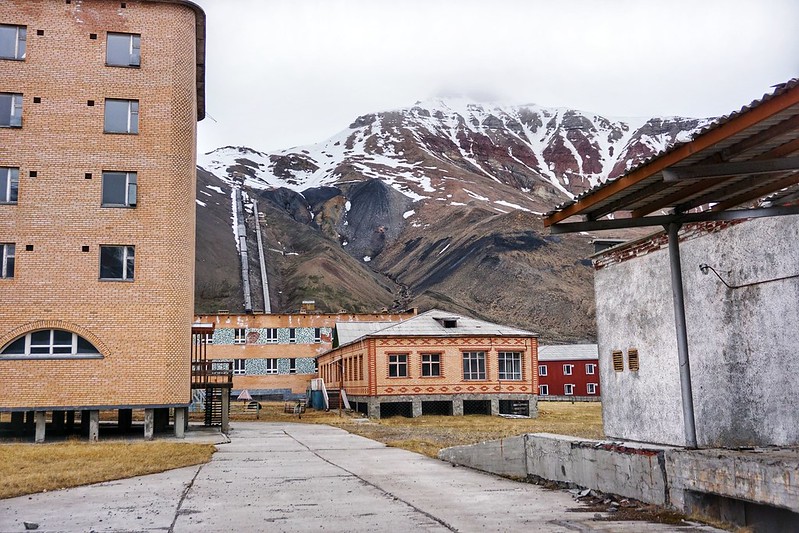











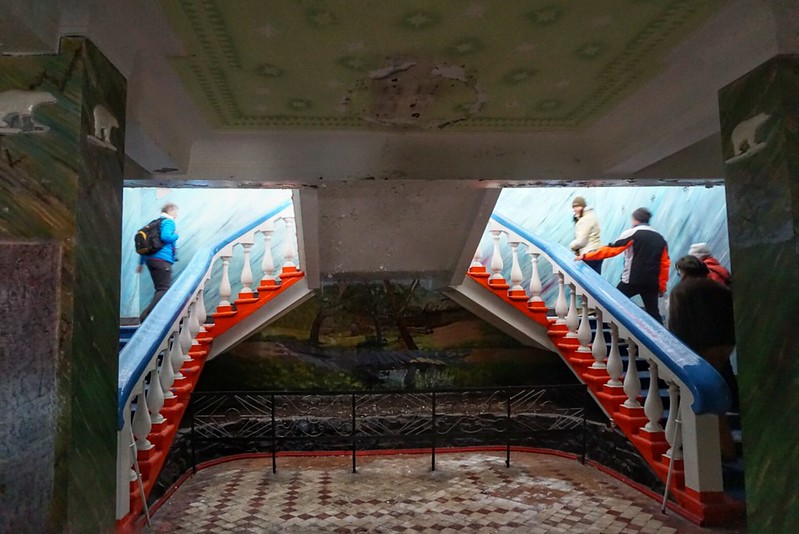



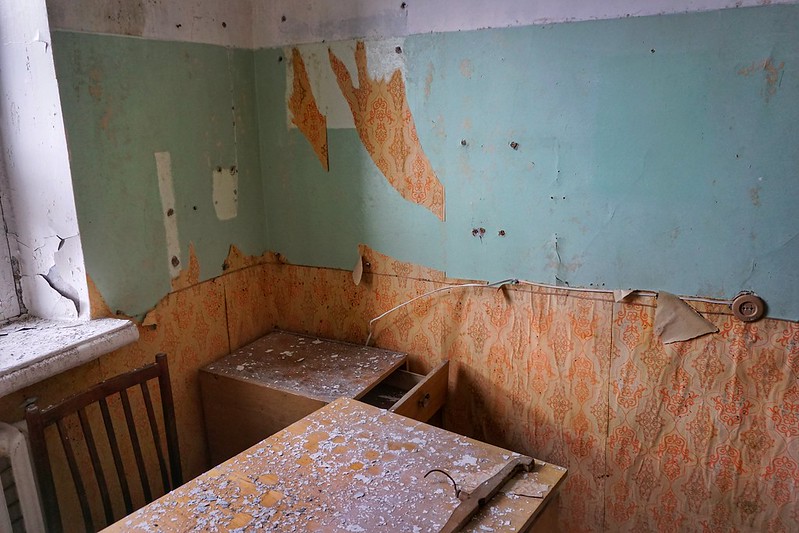






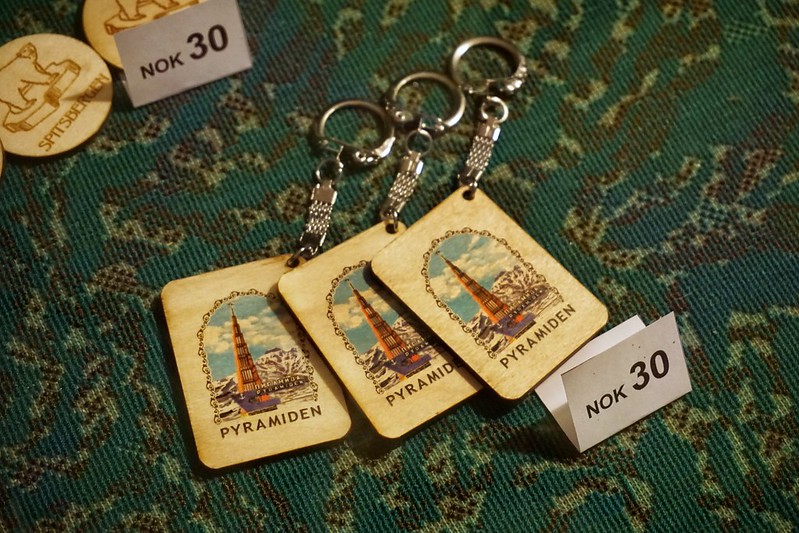




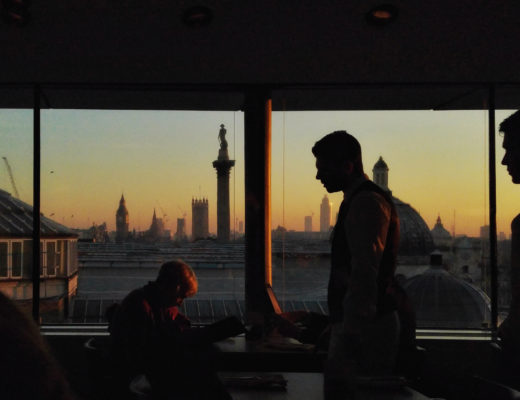


20 Comments
Zoe | Together In Transit
January 19, 2019 at 1:23 pmThanks for sharing! My partner and I are exploring more places like this, but haven never heard of this place until now!
Flora
January 20, 2019 at 1:28 amI feel like lots of people aren’t aware of Pyramiden! Hopefully you make it there at some point – it’s such a fascinating place 🙂
Anya
January 19, 2019 at 1:34 pmWow, what an adventure!! I have Svalbard on my bucket list but didn’t know anything about Pyramiden! It looks amazing and makes me want to visit before all tourists get there!
Flora
January 20, 2019 at 1:38 amThat’s pretty much how I felt, Anya! I think now there’s a couple of accommodation options for overnight stays in Pyramiden it might get popular more quickly – so you’d better get there quick!
Stephanie Craig
January 19, 2019 at 2:33 pmThis is fantastic! I love exploring Russian and Soviet history-just didn’t think to look to Norway for it!
Flora
January 20, 2019 at 1:38 amHah! It’s not the most obvious choice – but that makes it all the more unique :p
juliemsa
January 19, 2019 at 4:51 pmSuch a cool read! Im actually from Norway, but I’ve never been to Svalbard. This souds like a really special experience:)
Flora
January 20, 2019 at 1:40 amOoh I hope you get to visit! It’s only a short flight from Oslo…!
Clazz - An Orcadian Abroad
January 19, 2019 at 10:18 pmWhat a fascinating place, and a great write up! I’ve kinda wanted to go to Svalbard ever since reading Phillip Pullman lol, but this place looks amazing.
Flora
January 20, 2019 at 1:43 amPullman is definitely where I got my first desires to head up to Svalbard too! I can confirm that it’s just as surreal as the books would make us think 🙂
Amanda Williams
January 20, 2019 at 3:30 amI think the “frozen in time” aspect while people still live there is more interesting than a total ghost town. I’ve become a bit obsessed with the Arctic in the last few years, and Svalbard is one place I still need to go now that I’ve been to Arctic Norway and Greenland and Churchill. Something about the remoteness intrigues me.
Flora
January 22, 2019 at 11:02 amI totally agree, Amanda! It’s more mysterious to think of a handful of hardy Russians wandering this near-empty landscape..! I’d love to see if the Canadian Arctic and Greenland feels similar to Arctic Norway. It blows my mind that they’re all so close to each other!
Roma Small
January 20, 2019 at 4:24 pmIt shouldn’t come as a huge surprise that I’m a fan of urban exploration especially abandoned sites like Pyramiden. I love that you spotted the staged rooms, it’s not something many people think about when they visit, more often than not those rooms are staged for THAT photo or a reason to trigger a thought pattern in the visitor. It’s not entirely authentic like in the way it was left by the original inhabitants but I don’t suppose that matters as long as you’re aware of it.
Flora
January 22, 2019 at 11:07 amThe idea that they’ve been designed to trigger thought patterns in visitors gives me SUCH a creepy feeling!! But it makes total sense – it’s the same as museum curators arranging exhibits in a particular way to evoke emotional responses from visitors. So much to think about!!
Nell
January 20, 2019 at 5:31 pmThis is fascinating Flora – imagine trying to hike to this place. Polar bears..! Think even we would draw the line at that one.
Thanks for sharing this!
Flora
January 22, 2019 at 11:07 amArghh if you guys tried to walk to Pyramiden amongst the bears I’d have to have some serious words with you both!!
Mika
January 30, 2019 at 7:19 pmThank you. Very interesting trip report and nice photos. I would be pleased to visit there myself..
Arctic Explorations: 15 Literally Cool Things to Do in Svalbard - Birdgehls
January 30, 2019 at 11:47 pm[…] It’s pretty hard to reach in the winter but during summer boats stop at its shores, allowing tourists to get out and explore. Curious? Flora the Explorer has written an excellent post on what it’s like to visit Pyramiden. […]
Andreas Moser
February 14, 2019 at 3:23 amI once applied to work in Pyramiden, but sadly, I was neither Russian, nor had I applied in time, nor was I a coal miner. I am just a writer who would cherish the solitude and the lack of electronic distractions, or so he believes now.
Another idea would be to offer Russian language courses there. Not too many people to talk to, admittedly, but not many distractions in foreign languages either. Total immersion.
zamansophie326
February 14, 2019 at 7:46 amGreat post, very interesting content! You’re blog is always spot on and very inspirational!